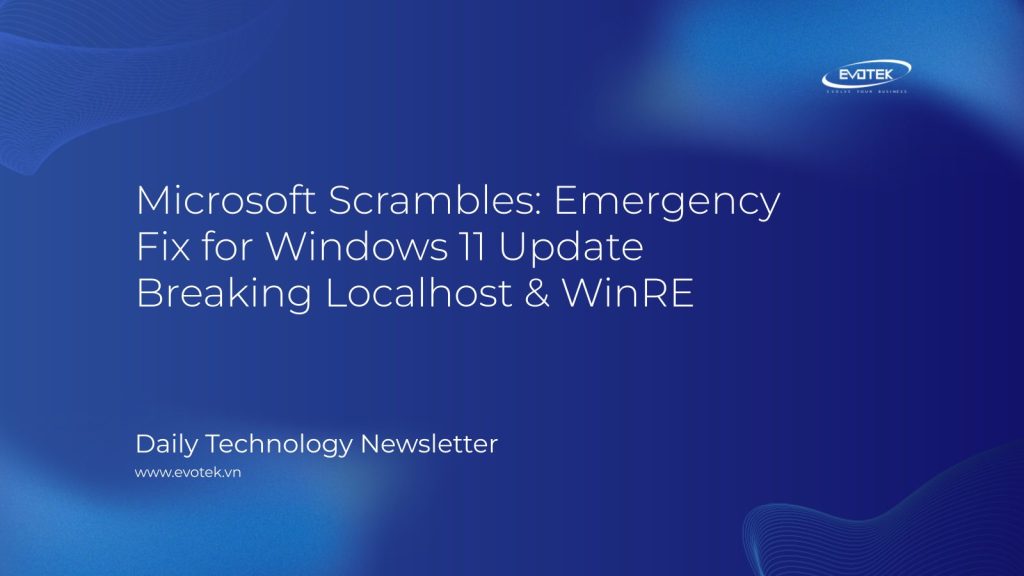Just days after ceasing security updates for 500 million Windows 10 users, Microsoft now faces a new crisis with Windows 11. A recent mandatory security update, identified as a “total disaster” by users and experts, has prompted an urgent response from the tech giant.
Microsoft has officially confirmed that its Windows 11 update, KB5066835, is causing widespread disruption, necessitating an emergency patch. The critical issue primarily affects localhost connections, rendering locally hosted applications unable to connect to networks. Beyond this, users are reporting significant installation failures and bugs that prevent essential peripherals and accessories from functioning correctly.
Critical Flaws Discovered in Windows 11 Update
Reports from Windows Latest detail the severity of the situation. Microsoft acknowledges a “regression in the kernel-mode HTTP server (HTTP.sys).” This flaw specifically mishandles HTTP/2 handshakes/frames when browsers or applications attempt to connect to services hosted on 127.0.0.1, effectively resetting the connection.
This technical glitch has profound implications, impacting vital services like IIS (Internet Information Services), the ASP.NET Core Module, and other applications that rely on HTTP.sys to handle 127.0.0.1 requests. Windows is designed to process these requests by loading an HTTP/2 session in the kernel, which then routes them to the appropriate worker or application.
Adding to the chaos, the update has also rendered the Windows Recovery Environment (WinRE) largely unusable. Users are finding their mouse and keyboard unresponsive within WinRE, making it impossible to navigate options for troubleshooting or resetting the operating system. This is particularly concerning for millions of users, especially those who recently upgraded from Windows 10.
Microsoft’s Response and User Guidance
Microsoft has confirmed the WinRE issues alongside the localhost-related problems and is actively rolling out an emergency patch. However, affected users are warned that the hotfix might take longer than 48 hours to appear on their PCs.
In the interim, official advice is to check for updates and reboot your PC, even if no new updates are immediately listed. Importantly, users encountering these issues are strongly cautioned against attempting “internet solutions.” Many online fixes are reported not to work and could potentially worsen system stability.
While some “green-fingered workarounds” for these various issues might exist, they often involve manipulating system files with significant risks, including rendering Windows unstable or unbootable. For the vast majority of Windows 11 users, waiting for the official emergency update is the safest and most recommended course of action.
Broader Implications: Microsoft’s “Fragile Ecosystem”
This Windows 11 debacle arrives as Windows 10 users grapple with the end of free security updates. Those still on Windows 10 are reminded to ensure their PCs are updated with the final security fixes, or consider enrolling in the 12-month ESU (Extended Security Updates) program to maintain support until 2026, which is now available for purchase in the Microsoft Store.
The confluence of these events highlights a critical period for Microsoft. As The Register aptly summarizes, “within the same week, Microsoft’s installer broke, its new OS borked local development, and Redmond’s multimillion-dollar upgrade push instead highlighted how fragile its ecosystem still is.” This chain of events underscores the vital importance of robust update mechanisms and thorough testing to maintain user trust and system integrity.

 日本語
日本語 한국어
한국어 Tiếng Việt
Tiếng Việt 简体中文
简体中文